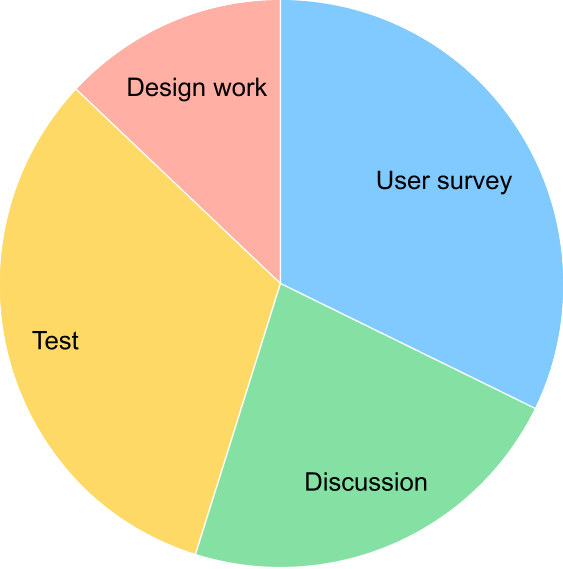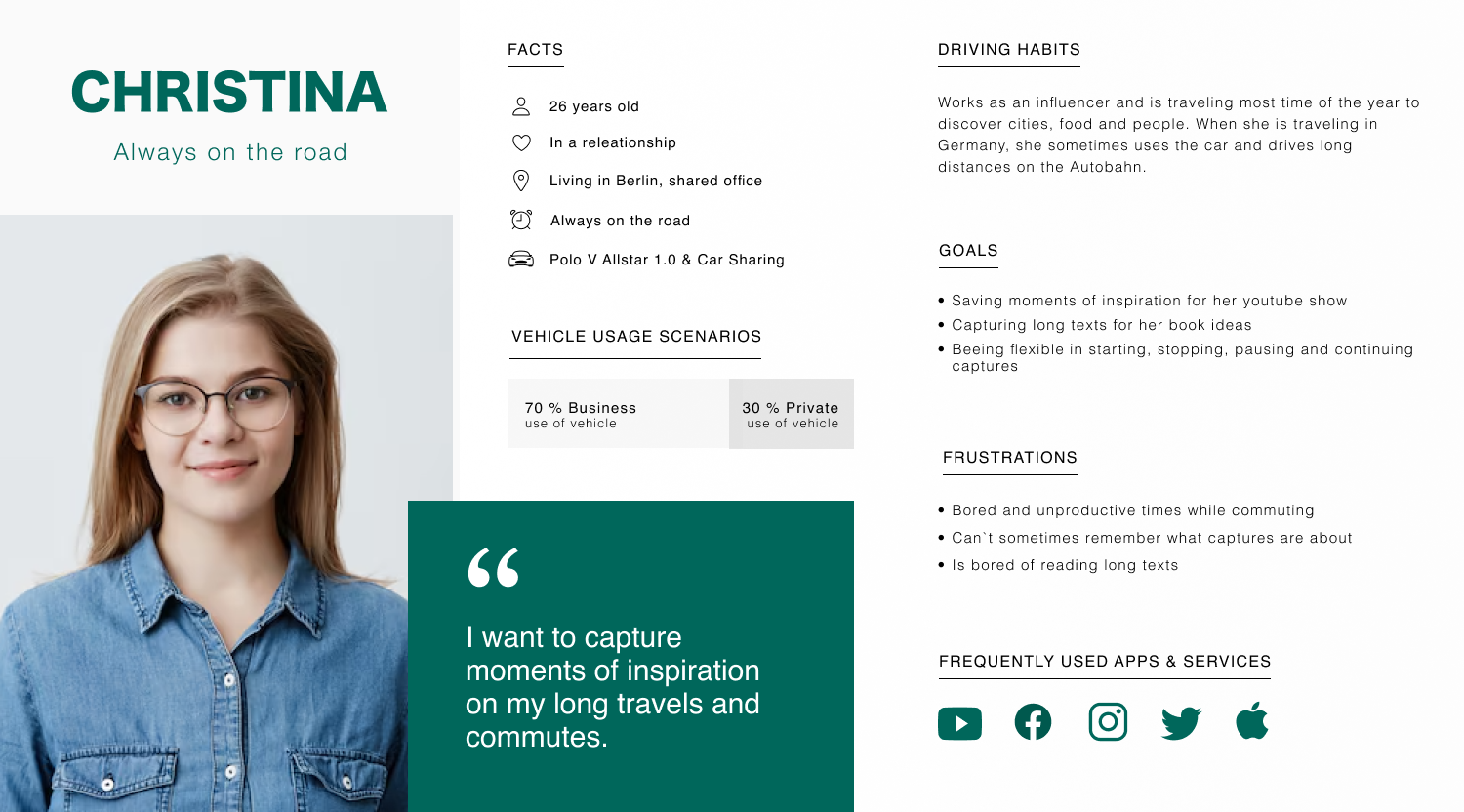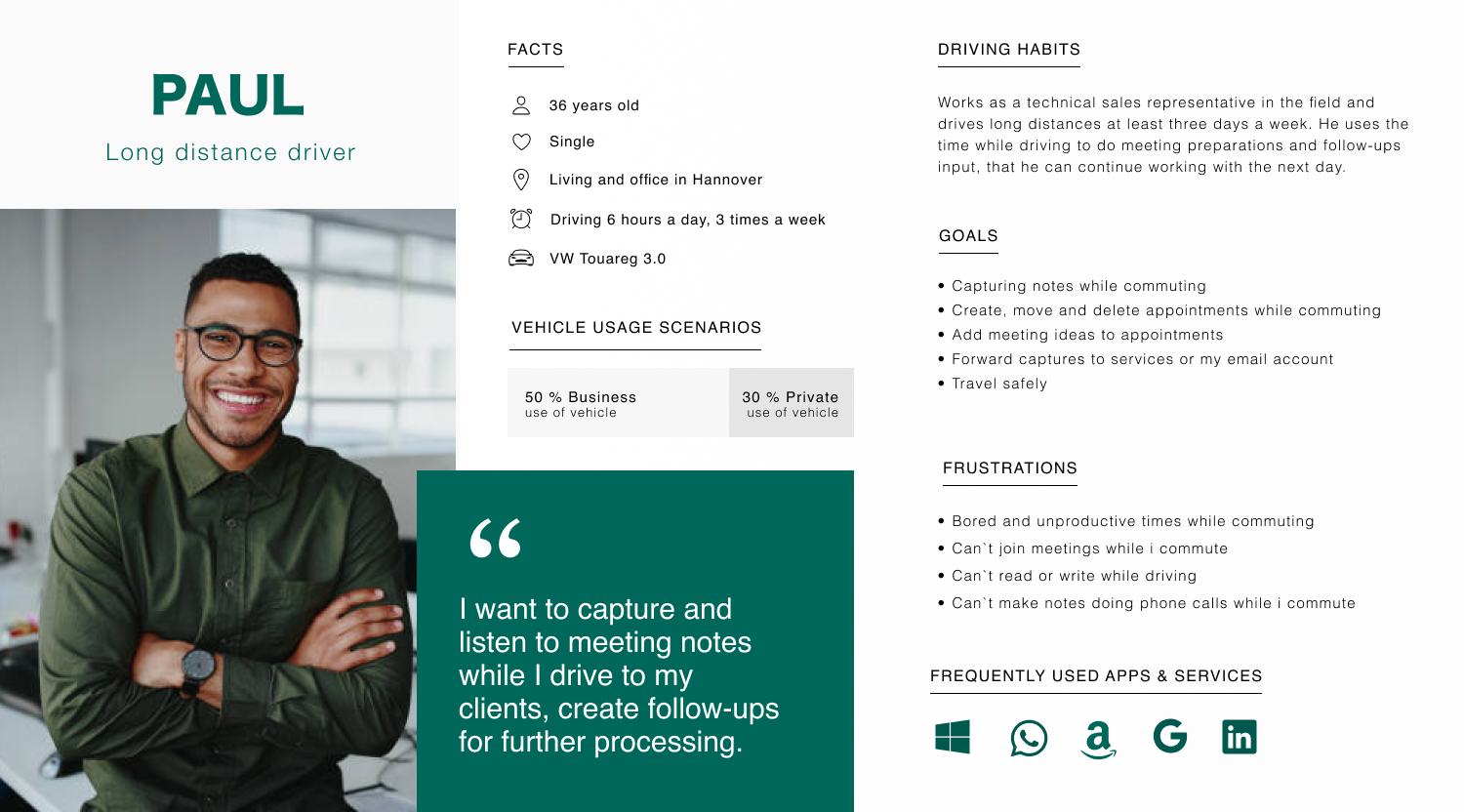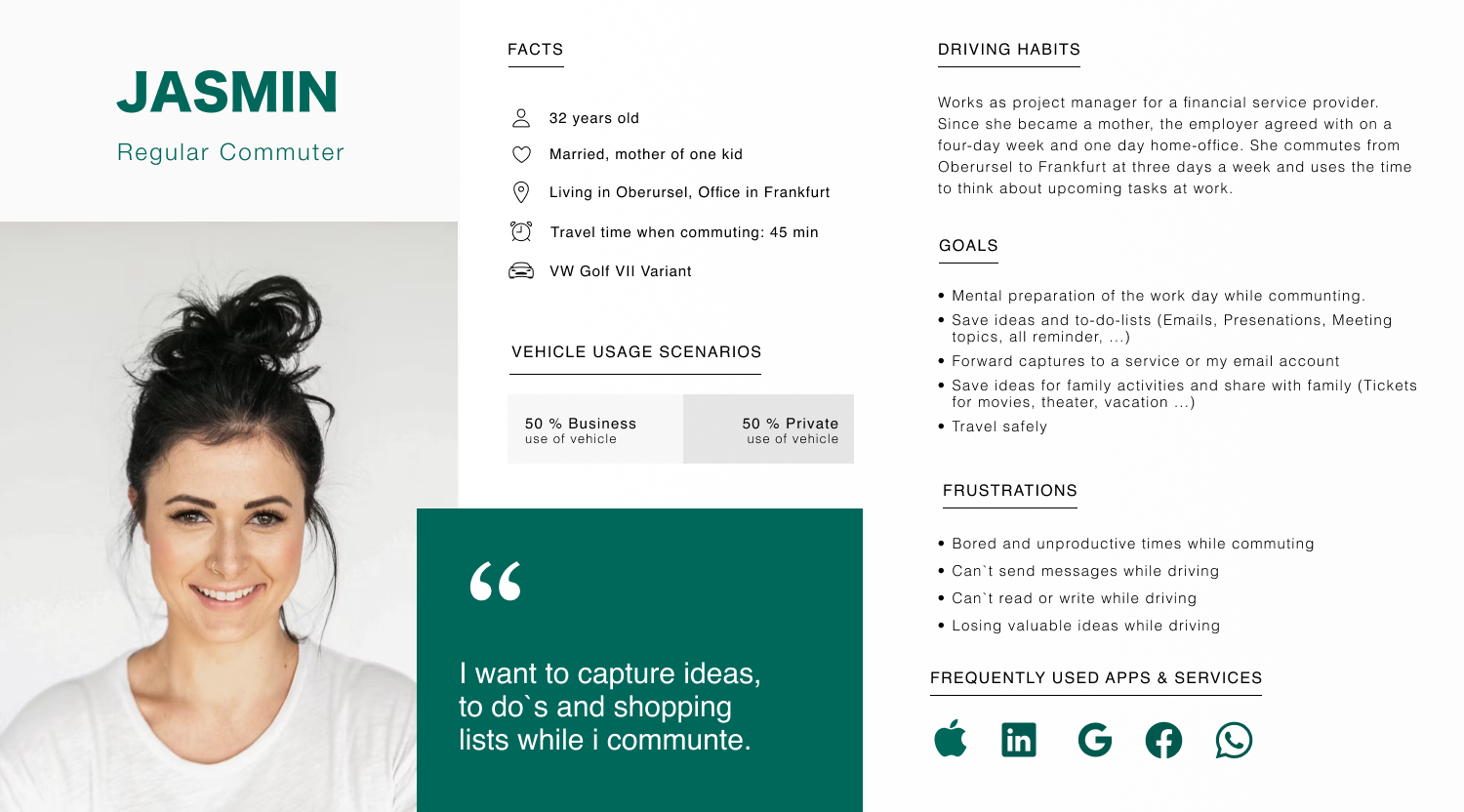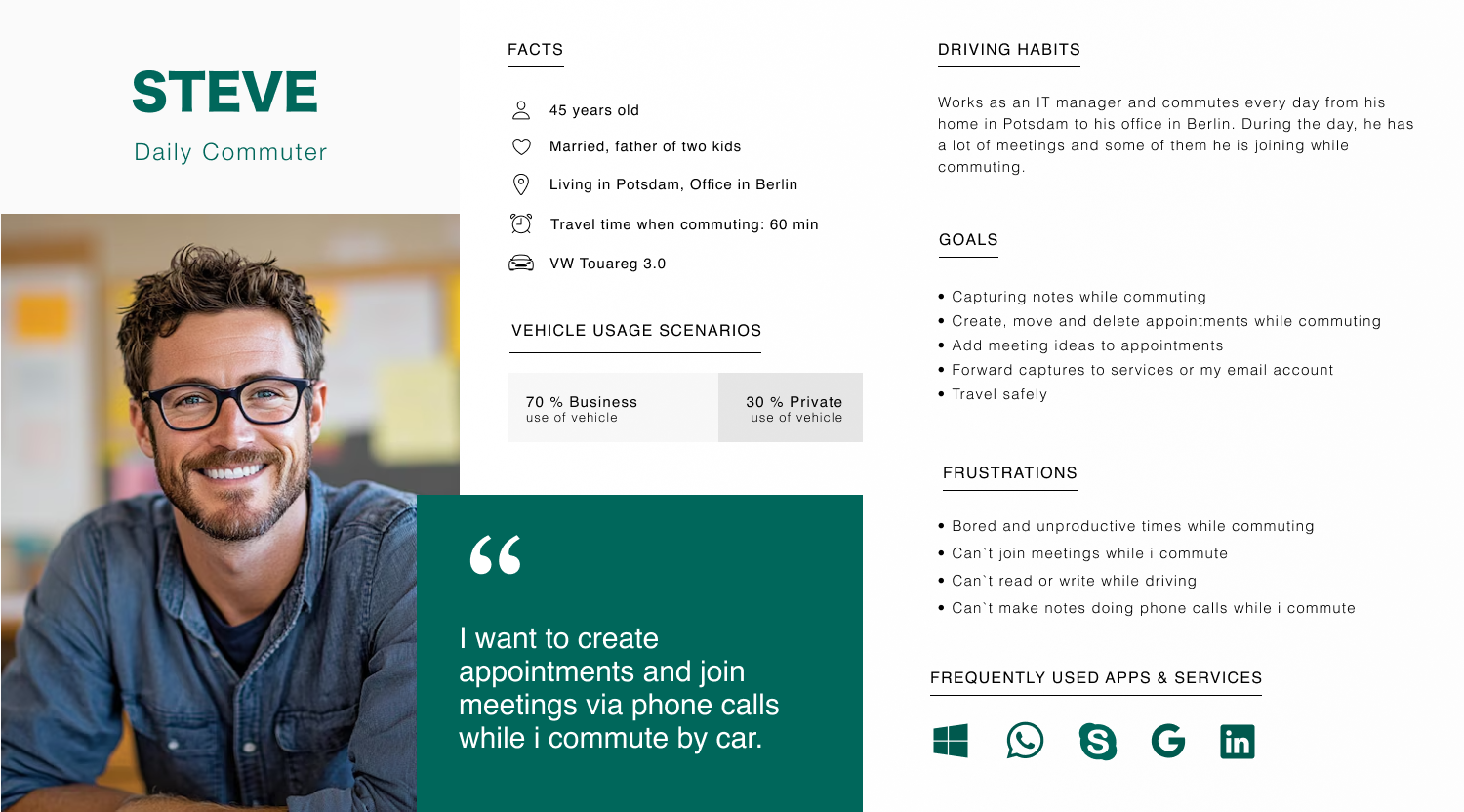Volkswagen – Capture App
A design sprint about the question, how can we enable commuters to be productive while commuting by car.
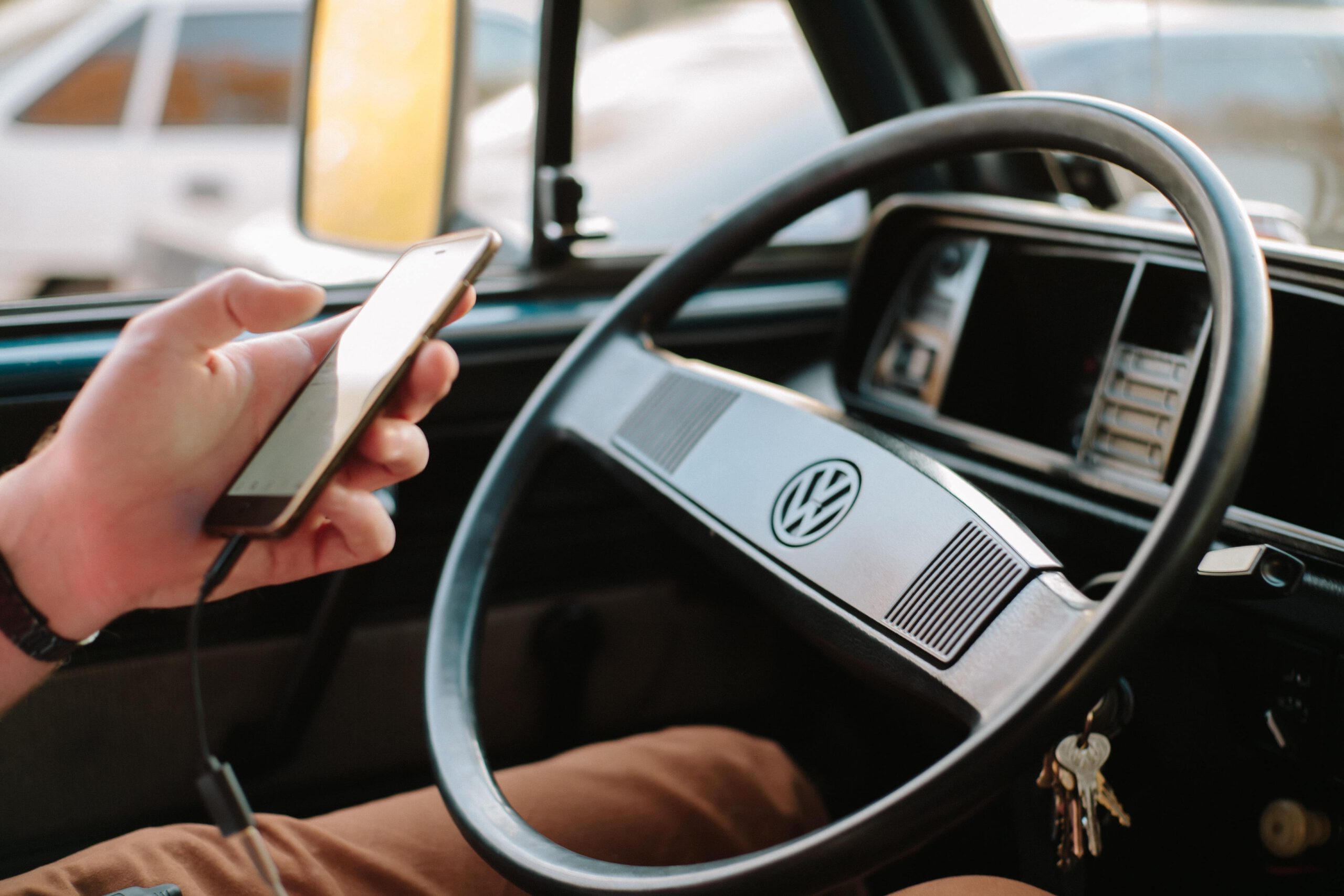
Role and team
Sprint Master (Microsoft), Product Owner (Volkswagen), UX Designer (Me), Developer (Microsoft), Research & Test Users (Volkswagen & Microsoft)
Methods
Context of use
User Survey
Personas
User Scenarios
Task Analyze
Wireflow
Conversational Design
Prototyping
Timeline
10 days
Tool Kit
Google Forms
OAxure
Sketch
Pen & Paper
GoPro Camera
Challenge
In this design sprint we used the Product Thinking method to solve a specific problem for a specific user group through a product or service offering.
How can we enable commuters to be productive while driving by car?
Design Process
1. Discover
USER PROBLEM – What problem do we solve?
In the discover phase, a discussion began about what the problem is and how the problem feels like, how big the problem is and whether a solution to the problem would mean real added value for the users.
TARGET AUDIENCE – Who is it for?
While discussing who the target group is and it was already clear, that it ithe group of car commuters, we identified further segments within that group: Commuters by car
2. Define
VISION – Why are we doing this?
The final product vision would be realizable through the technical development in another area, the autonomous driving with cars. This would ensure full productivity during the journey. The product would therefore be an interim solution on the way there and would generate valuable data in the process.
STRATEGY – How are we doing this?
Knowing that this is an interim solution and in order to establish a strategic cooperation with Microsoft, on whose cognitive services the initial voice interface is based, the service is to be offered to a broad audience and not just to Volkswagen customers. The service is therefore being developed as a smartphone app and is compatible with all types of car in order to be able to collect as much data as possible.
GOAL – What do we want to achieve?
Knowledge in the aera of In-Car Productivity and the use of voice user interfaces while driving.
FEATURES – What are we doing?
We created a Feature map that was already structured in epics, features and functions to define the projects scope and as a first step towards user flows.
3. Bulid & Test
We sketched out the user experience in the four user scenarios, based on the four main problem statements and did a Task Analyze of the ideated user flow. We then created wireframes and dialogs of the corresponding User Flows as preparation of the Prototype. The Graphical User Interface was created with Axure and we simulated the Voice User Interface with pre-recorded phrases, spoken by Mircrosoft’s Cortana.
Sprint Planning
A design sprint unfolds its magic through the dynamics that arise over the reduced period of time. In order not to become isolated on individual tasks, strict time planning is relevant for the success of the sprint.

What`s the problem?
- While commuters on the train can use their time productively on the way to work, drivers are obliged to concentrate on the road. The legislator has specified the maximum duration in which one can keep his eyes off the road while driving, but it is clear that the visual and mental focus should to stay on the traffic situation and perspectively decreases with the use of further safety technologies.
- In contrast, on the train one has the disadvantage that the entire compartment can listen to ones video conference or telephone call. Using a Voice Interface in a train might also lead to more knowledge about personal goals and activities, than one would like while the usage of Graphical Interfaces are not a problem at all.

Strategy
Aware that there are devices that are basically constantly listening and waiting for a keyword, such as Alexa, it was decided in this project that users should have full control over the listening mode – by actively starting and stopping it.
The service should also be compatible with a wider user group, not just Volkswagen customers, so the plan is to use third-party Bluetooth buttons to start and stop the voice user interface, regardless of what type of car is driven.
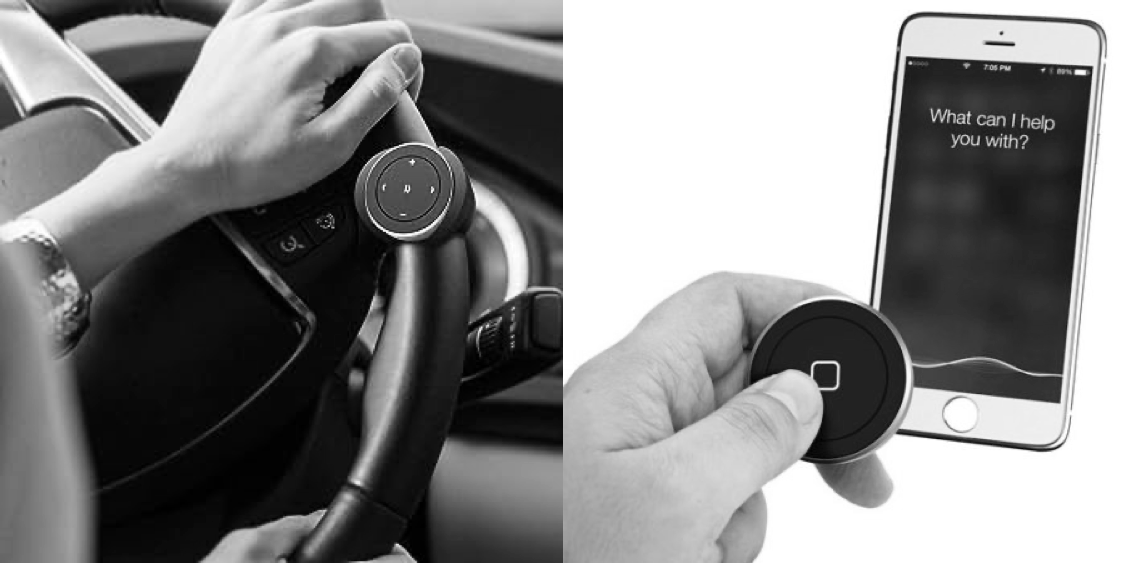
Features
The scope and the correspoding features were extracted from the target group survey analyze, from the modulated personas and collected in a Feature Map, that is already structured in epics, features and functions.

Build and Test
We outlined user scenarios according to the four personas and their corresponding basic user problems. After sketching the scenarios in an ideal world, they were futher cleared in task analyzes, wireflows and dialogs.
User Scenarios

Task Analyze
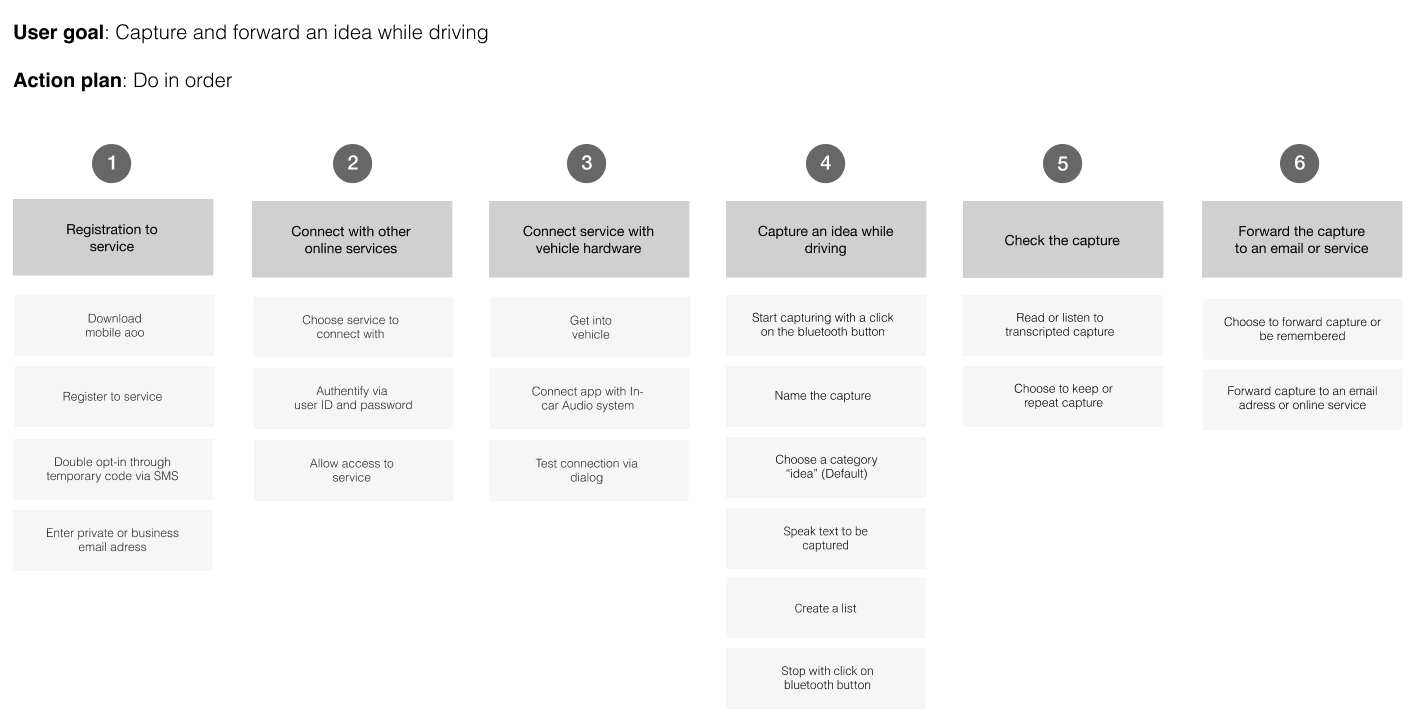
Wireflow

Voice Interaction Flow
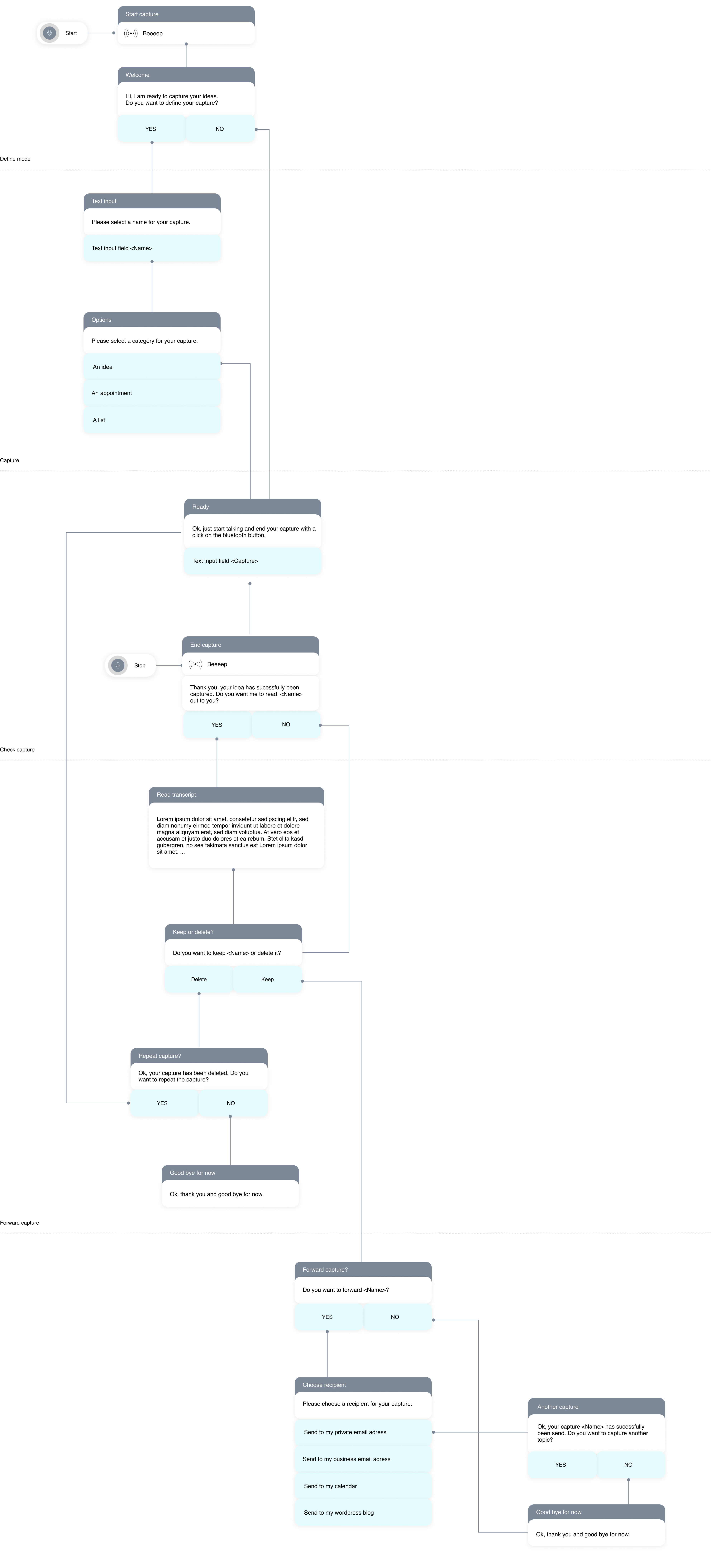
Screen Design
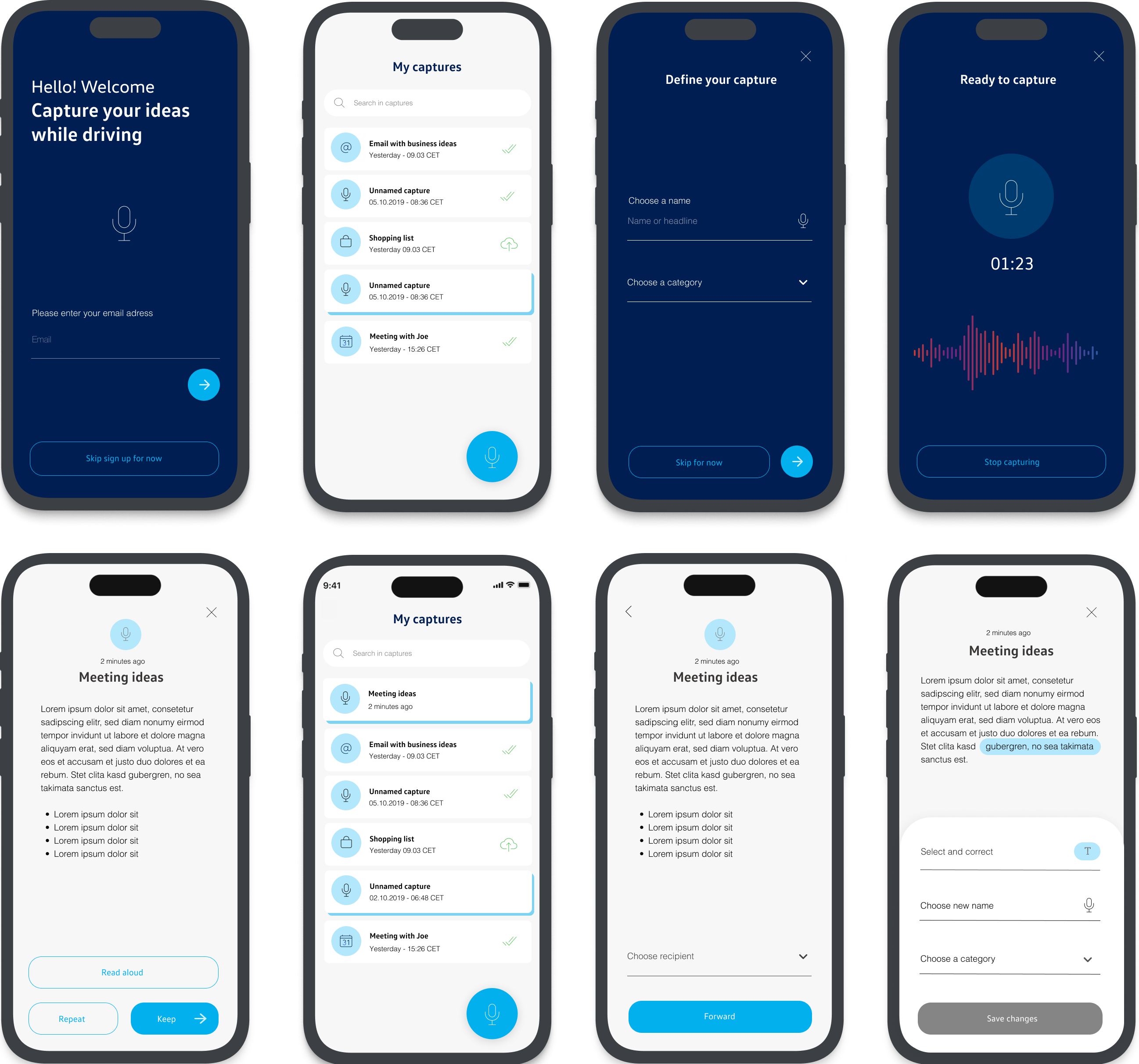
User Test
Because of the limited time, it wasn`t possible to implement logic to the voice user interface. We created core dialogs and recorded the spoken sentences by MS Cortana as audio files, which we played back from a tablet during the user test and simulated the Voice User Interface that way.
The entire test was recorded and evaluated with a GoPro camera. The Graphical User Interface was tested via a clickable Axure prototype. The perspective users were asked to compete concrete tasks and interviewed after the drive.
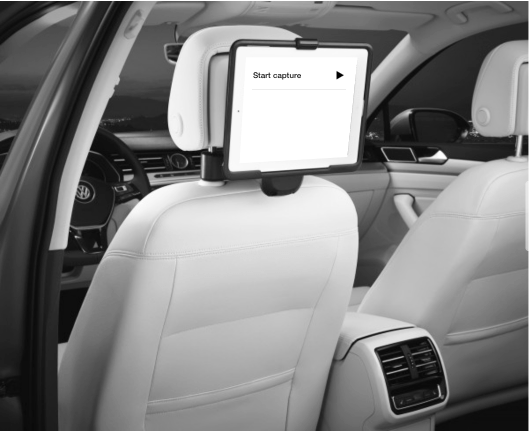
Conclusion
1. A try-and-error mode while using the Voice UI
Not everybody was used to Voice Interfaces back in 2016 and the human-machine-dialogues often went into a trial and error mode, looking for commands that would be understood or accepted. This could also result from the test setup, but what we can say is, that nearly everybody was trying to explore the boundaries and the cognitive capabilities of the service. So a initial voice menue might have taken the users more time to finish the tasks, but would have given more guidance and a better overview of what is possible.
2. A seamless service would be prefered
The users did like the features of the service, but the design goal to create a user flow that feels satisfying when ending a tasks could not be fully achieved. The users didn`t like the usage break that is generated when continuing a task that started with capturing via the Voive user interface and had to be finished with the Grafical user interface after finishing the drive.
3. A more flexible differentiation between private and business usage
Even though the users demanded a clear separation between private and business content, the offered solution to clearly devide the content when logging in to a private or business account was seen as too unflexible, because it prevents users to capture private and business ideas on the same route. An initial neutral recording of ideas and specification based on the recipient would have been preferred.
Learnings
This was one of my first design sprints in 2016 and because there were no iterations planned, the main result after user testing was the evidence that emerged.
It was interesting to see that evidence does not always come from the effort or time put into individual tasks, but that in an ideal world, UX design is a dynamic cognitive process that impacts a group.
